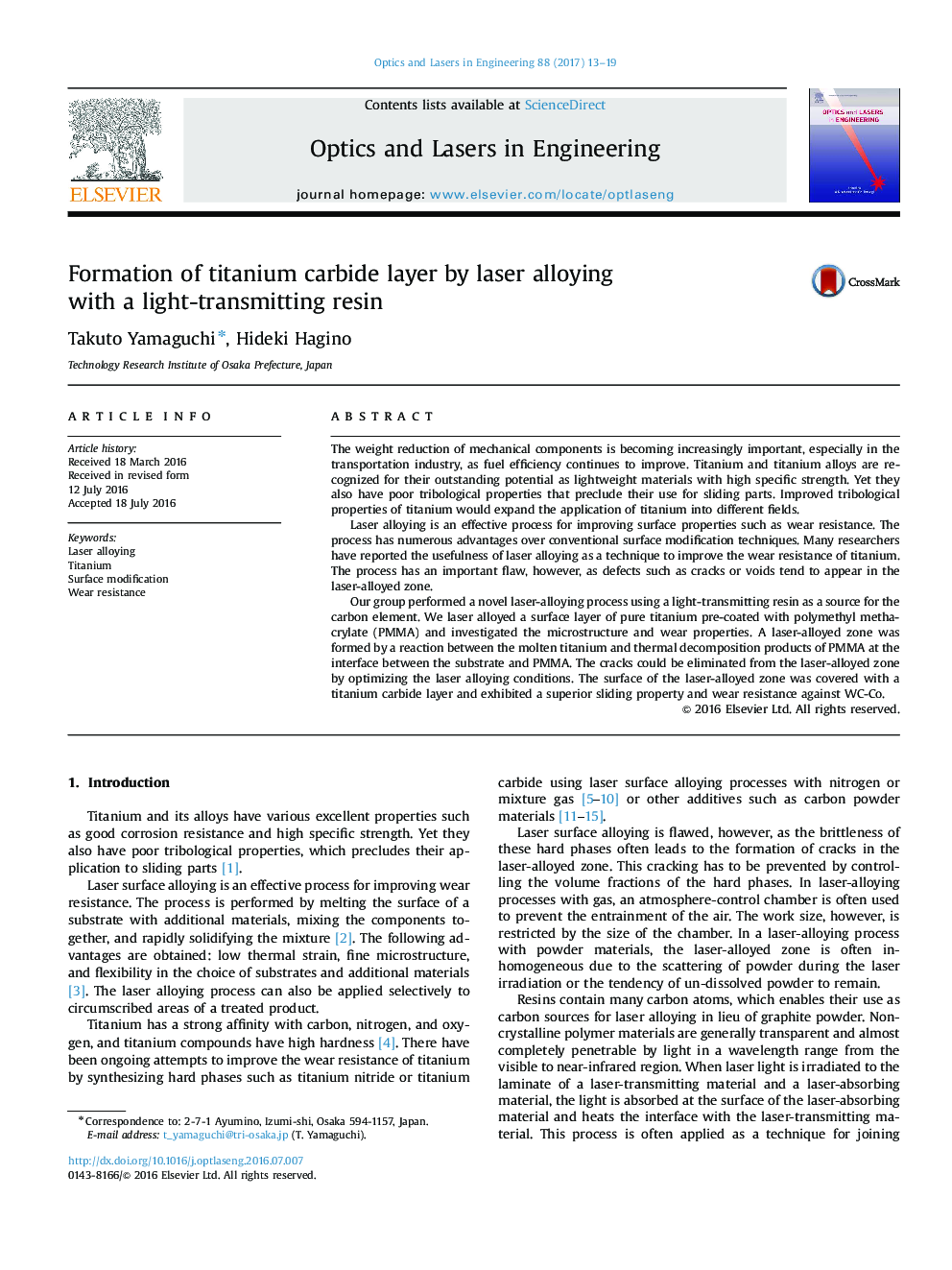| Article ID | Journal | Published Year | Pages | File Type |
|---|---|---|---|---|
| 734949 | Optics and Lasers in Engineering | 2017 | 7 Pages |
•A novel laser alloying process using a light-transmitting resin was proposed.•The process allows the local carburizing treatment of metal substrates.•A crack-free laser-alloyed zone was obtained on a titanium substrate.•The amount of carbide phase was controllable by the laser irradiation conditions.•The laser-alloyed zone exhibited a superior sliding-wear property.
The weight reduction of mechanical components is becoming increasingly important, especially in the transportation industry, as fuel efficiency continues to improve. Titanium and titanium alloys are recognized for their outstanding potential as lightweight materials with high specific strength. Yet they also have poor tribological properties that preclude their use for sliding parts. Improved tribological properties of titanium would expand the application of titanium into different fields.Laser alloying is an effective process for improving surface properties such as wear resistance. The process has numerous advantages over conventional surface modification techniques. Many researchers have reported the usefulness of laser alloying as a technique to improve the wear resistance of titanium. The process has an important flaw, however, as defects such as cracks or voids tend to appear in the laser-alloyed zone.Our group performed a novel laser-alloying process using a light-transmitting resin as a source for the carbon element. We laser alloyed a surface layer of pure titanium pre-coated with polymethyl methacrylate (PMMA) and investigated the microstructure and wear properties. A laser-alloyed zone was formed by a reaction between the molten titanium and thermal decomposition products of PMMA at the interface between the substrate and PMMA. The cracks could be eliminated from the laser-alloyed zone by optimizing the laser alloying conditions. The surface of the laser-alloyed zone was covered with a titanium carbide layer and exhibited a superior sliding property and wear resistance against WC-Co.
